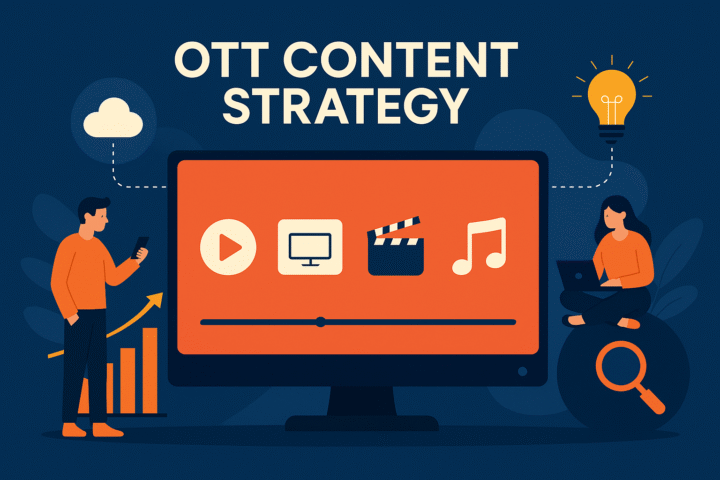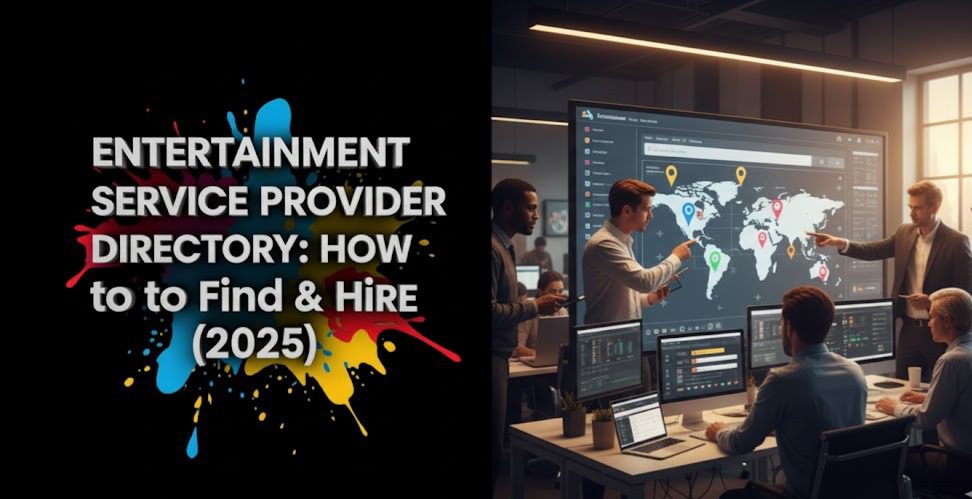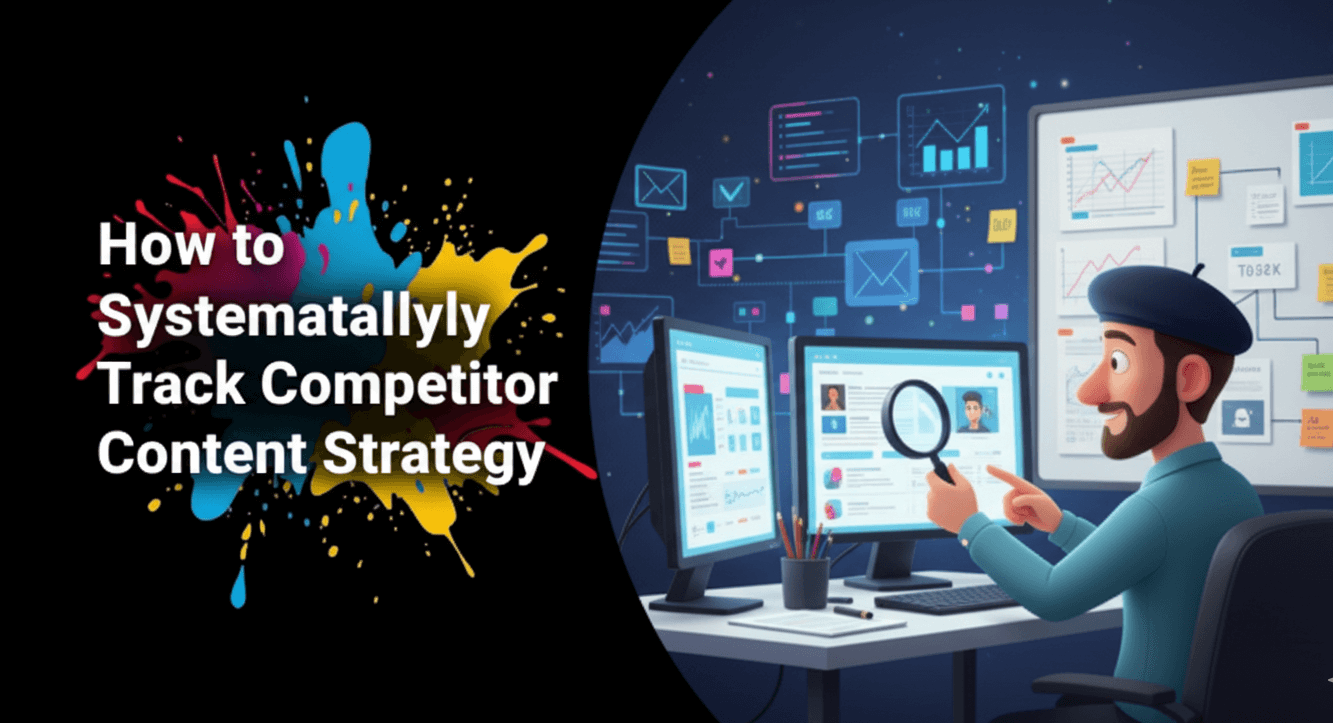Introduction
Hello media innovators and content creators! The world of television has changed dramatically, and “Over-The-Top” or OTT content strategy is now the name of the game.
If you’re looking to launch a new streaming service, grow your existing platform, or simply understand how to capture and keep an audience in this crowded space, you’ve come to the right place.
This article will guide you through the essentials of building a powerful OTT content strategy, from understanding your audience to measuring success.
We’ll explore how to pick the right content, keep viewers engaged, and make smart, data-driven decisions. Let’s get started on building your streaming success story!
Key Takeaways
| Aspect | Description |
|---|---|
| Definition | An OTT content strategy is the plan guiding the acquisition, creation, curation, and delivery of video content directly to viewers via the internet, bypassing traditional cable or satellite providers. |
| Core Goal | To attract, engage, and retain subscribers or viewers by offering a compelling and differentiated content library. |
| Key Elements | Audience understanding, content mix (originals, licensed, niche), monetization model, user experience (UX), and data analytics. |
| Challenges | High competition, content discovery, rising content costs, subscriber churn, and global market variations. |
| Success Factors | Strong original content, personalization, effective marketing, understanding viewing habits, and leveraging data insights from platforms like Vitrina. |
Planning Your Next Big Original or Licensed Hit?

Understanding Your Audience: The Foundation of Your OTT Strategy
Before you pick a single show or movie, you need to know who you’re serving. Your audience is the compass for your entire OTT content strategy. If you don’t know who they are, what they like, and where to find them, you’re flying blind. Let’s talk about getting to know your viewers.
How to identify and segment your target audience for OTT services?
Identifying your target audience isn’t just about age and gender. It’s about diving deeper. You can segment your audience based on:
- Demographics: Age, gender, location, income, education. This is a basic starting point.
- Psychographics: Lifestyles, interests, values, opinions, and attitudes. What do they care about? What are their hobbies?
- Behavioral Data: Viewing habits (what, when, and how they watch), device preferences, subscription history, and app usage.
- Content Preferences: Favorite genres, actors, directors, themes, and even content formats (e.g., binge-watchable series vs. weekly episodes).
You can gather this information through surveys, focus groups, social media listening, analyzing competitor data, and by looking at viewing data if you have an existing platform. The more detailed your segments, the better you can tailor your OTT content strategy.
Analyzing viewing habits and preferences to inform content acquisition.
Once you know *who* your audience is, you need to understand how they consume content.
Are they binge-watchers who devour entire seasons in a weekend?
Or do they prefer a slow burn, with weekly episode drops?
Do they watch primarily on smart TVs, laptops, or mobile devices?
What time of day are they most active?
This data is gold. It tells you:
- What kind of content to acquire or produce: If your audience loves true crime documentaries, you know where to focus your acquisition budget.
- How to schedule releases: Binge-drops for series popular with younger, highly engaged audiences, or weekly for shows that benefit from social media buzz between episodes.
- Optimal content length and format: Are short-form videos better for mobile viewers? Do long-form documentaries perform well on connected TVs?
Analyzing these habits helps ensure your OTT content strategy delivers the right content, in the right way, at the right time. Platforms offering market intelligence, such as looking at Vitrina’s solution for content availability and deals, can reveal trends in viewing preferences across different markets.
| Audience Data Point | Strategic Implication for OTT Content |
|---|---|
| Preferred Genres (e.g., Sci-Fi) | Prioritize acquiring or producing Sci-Fi content. |
| Average Viewing Session Length | Inform episode length or movie selection. |
| Most Active Viewing Times | Guide content promotion and release timing. |
| Device Preference (e.g., Mobile) | Optimize content for mobile viewing, consider vertical formats. |
Crafting the Perfect Content Mix for Your OTT Platform
With a solid understanding of your audience, it’s time to build your content library. The right mix is crucial for a successful OTT content strategy. It’s like being a chef – you need the right ingredients in the right proportions to create a dish everyone loves. This involves balancing original productions with licensed content, and deciding if you’ll go broad or find a specific niche.
The role of original content vs. licensed content in an OTT strategy.
This is a big one. Both Original Content and Licensed Content have their pros and cons:
Original Content (Originals):
- Pros: Exclusive to your platform (a major draw!), builds brand identity, can create huge buzz (think Stranger Things for Netflix), potential for IP ownership and long-term value.
- Cons: Expensive and time-consuming to produce, high risk (not all originals are hits), requires significant upfront investment.
Licensed Content:
- Pros: Often cheaper and faster to acquire than producing originals, can include popular, well-known titles that attract subscribers, fills out your content library quickly.
- Cons: Non-exclusive (viewers might find it elsewhere), licensing terms can be restrictive (limited time, specific regions), costs can escalate for popular titles.
Most successful OTT services use a hybrid model, balancing a slate of compelling originals with a solid library of licensed content. Your specific mix will depend on your budget, brand, and audience preferences. A well-thought-out OTT content strategy carefully weighs these factors.
Strategies for content acquisition, development, and curation.
Building your library involves several interconnected activities:
- Acquisition: This is buying the rights to show existing movies, TV series, documentaries, etc. It involves negotiating deals with studios, distributors, and independent producers. You’ll need to consider exclusivity, territories, and the license window.
- Development: If you’re going the originals route, development is key. This means finding great scripts, attaching talent (writers, directors, actors), and nurturing projects from an idea to a greenlight. This is where unique stories come to life.
- Curation: This is the art and science of selecting and organizing content within your platform to create a cohesive and appealing experience. It’s about more than just having lots of titles; it’s about presenting them in a way that helps users discover content they’ll love. Think themed collections, personalized recommendations, and editorial highlights.
A strong OTT content strategy has clear processes for each of these, often informed by data on what your audience is watching and what’s performing well in the market.
Balancing niche content with mass-appeal programming.
Should your OTT service try to be everything to everyone, or focus on a specific niche? There are successful examples of both.
- Mass-Appeal: Platforms like Netflix aim for broad appeal with a vast library covering many genres. This requires a large budget and constant content refreshment.
- Niche: Services like Shudder (horror) or Crunchyroll (anime) cater to specific passionate fanbases. They offer deep libraries within their genre, becoming the go-to destination for those fans.
Your OTT content strategy might also involve a “nichified mass-appeal” – offering a broad range but having distinct “content verticals” or “hubs” that feel like niche offerings within the larger service (e.g., a dedicated “K-Drama” section on a general entertainment platform). The key is to align your approach with your audience, brand, and resources. Understanding global content trends through services like Vitrina can help identify underserved niches or popular genres to target.
| Content Type | Key Advantage | Consideration for OTT Strategy |
|---|---|---|
| Original Series | Exclusivity, brand builder | High cost, long lead time |
| Licensed Blockbuster Movies | Attracts new subscribers | Often non-exclusive, high licensing fees |
| Niche Documentaries | Serves passionate audience segments | Smaller potential audience, requires careful curation |
| Archival/Classic TV Shows | Cost-effective library filler, nostalgia factor | Rights availability, picture/sound quality |
Distribution, Monetization, and Marketing in OTT
Having amazing content is just one piece of the puzzle. Your OTT content strategy also needs to cover how you get that content to viewers, how you make money from it, and how you let the world know about it. These elements are all interconnected and crucial for success.
Choosing the right monetization models (SVOD, AVOD, TVOD, Hybrid).
How will your OTT service generate revenue? There are several popular models:
- SVOD (Subscription Video On Demand): Users pay a recurring fee (monthly or annually) for access to a library of content. Examples: Netflix, HBO Max. This is great for predictable revenue but requires constantly delivering value to prevent churn.
- AVOD (Advertising-Supported Video On Demand): Users watch content for free, but with advertisements. Examples: Tubi, Pluto TV. This model attracts a wider audience but revenue depends on ad sales and viewership numbers.
- TVOD (Transactional Video On Demand): Users pay per piece of content, either to rent or buy. Examples: Apple iTunes, Amazon Prime Video Store. Good for premium, new releases but revenue can be less consistent.
- Hybrid: Many services now use a mix, like offering a cheaper ad-supported tier alongside a premium ad-free subscription tier (e.g., Hulu, Peacock).
Your choice of monetization model will heavily influence your OTT content strategy. For instance, an AVOD service might prioritize content that appeals to advertisers, while an SVOD service will focus on “must-have” exclusives to justify the subscription fee.
Effective content marketing and promotion strategies for OTT platforms.
You’ve built it, but will they come? Content marketing and promotion are essential to drive awareness, acquisition, and engagement. Your OTT content strategy should include plans for:
- Trailers and Teasers: Creating compelling promotional videos for your key titles.
- Social Media Campaigns: Engaging with potential viewers on platforms like Instagram, TikTok, X (formerly Twitter), and Facebook.
- Influencer Marketing: Partnering with relevant influencers to promote your content.
- PR and Media Outreach: Generating buzz through reviews, interviews, and articles.
- In-App Promotion: Highlighting new and featured content within your own platform.
- SEO and Content Discovery: Making sure your platform and its content are discoverable through search engines.
- Partnerships: Collaborating with other brands or services to reach new audiences.
The goal is to create a consistent message that highlights the value and uniqueness of your content offering.
Optimizing content discovery and user experience (UX) on the platform.
Even the best content can get lost if your platform is hard to navigate. A great User Experience (UX) and easy content discovery are part of a strong OTT content strategy. Consider:
- Intuitive Navigation: Clear menus, categories, and search functions.
- Personalized Recommendations: Using algorithms and viewing history to suggest content users will love. This is key for retention.
- Visually Appealing Interface: High-quality images, engaging artwork, and a clean layout.
- Seamless Playback: Fast loading times, minimal buffering, and options for quality settings.
- Watchlists and Profiles: Allowing users to save content for later and create multiple profiles for different household members.
If users can’t find what they want, or have a frustrating experience, they’ll leave, no matter how good your content is.
| Area | Strategic Focus | Example Tactic |
|---|---|---|
| Monetization | Align content with revenue model. | SVOD: Invest in high-value originals. AVOD: Secure ad-friendly content. |
| Marketing | Build awareness and drive acquisition. | Launch viral social media campaign for a new series. |
| UX/Discovery | Enhance engagement and reduce friction. | Implement advanced personalized recommendation engine. |
| Global Reach | Adapt content and platform for different markets. | Offer localized subtitles and dubbing for international content. |
Ready to Grow Your OTT Audience?

Measuring Success and Adapting Your OTT Content Strategy
Launching your OTT platform with a well-thought-out content strategy is just the beginning. To stay competitive and grow, you need to constantly measure your performance and be ready to adapt. Your OTT content strategy should be a living document, not something set in stone.
Key performance indicators (KPIs) for an OTT content strategy.
What numbers should you be watching? Here are some crucial KPIs for your OTT content strategy:
- Subscriber Growth Rate: How quickly are you adding new subscribers?
- Churn Rate: What percentage of subscribers are canceling their service each month? This is a critical health metric.
- Average Revenue Per User (ARPU): How much revenue are you generating per subscriber?
- Content Consumption Metrics:
- Total Viewing Hours: How much time are people spending on your platform?
- Unique Viewers per Title: How many different people watched a specific show or movie?
- Completion Rates: What percentage of viewers finish an episode or movie?
- Most Popular Content: Which titles are driving the most engagement?
- Customer Acquisition Cost (CAC): How much does it cost to acquire a new subscriber?
- Engagement Metrics: Daily/Monthly Active Users (DAU/MAU), session length, frequency of visits.
Tracking these KPIs will tell you what’s working, what’s not, and where you need to make changes.
Using data analytics to refine and evolve your content offerings.
Data is your best friend in the OTT world. By analyzing the KPIs mentioned above, plus other behavioral data, you can gain deep insights to refine your OTT content strategy:
- Identify Content Gaps: Are there genres your audience is searching for but not finding?
- Optimize Content Spend: Invest more in types of content that perform well and less in those that don’t.
- Improve Recommendations: Use viewing data to make your personalization algorithms smarter.
- Inform Greenlight Decisions: Data on similar content performance can help predict the success of new originals.
- Reduce Churn: Understand what content keeps subscribers loyal and what might be causing them to leave.
A continuous loop of data collection, analysis, and strategic adjustment is key to long-term success.
How Vitrina’s insights can support an agile OTT content strategy.
In a rapidly changing market, having access to timely and comprehensive data is crucial. Vitrina provides vital market intelligence that can significantly enhance your OTT content strategy. By offering a global view of content availability, distribution deals, platform catalogs, and upcoming projects through features like the Project Tracker, Vitrina empowers OTT players to:
- Spot Acquisition Opportunities: Discover new and library content available for licensing across different territories.
- Benchmark Against Competitors: Analyze the content strategies of other OTT services.
- Identify Content Trends: Understand what types of content are gaining popularity globally or in specific regions.
- Inform International Expansion: Assess content demand and availability in potential new markets.
By leveraging Vitrina’s solutions, OTT platforms can make more informed, agile decisions, ensuring their content strategy remains competitive and aligned with viewer preferences and market dynamics.
| KPI | What It Tells You | Actionable Insight Example |
|---|---|---|
| Churn Rate | Subscriber loyalty and satisfaction. | High churn after a popular show ends? Need more “sticky” content. |
| Content Completion Rate | How engaging a specific title is. | Low completion for a series? Re-evaluate its promotion or placement. |
| Most Popular Genres | Audience content preferences. | Comedy is consistently top? Invest in more comedy originals or acquisitions. |
| ARPU | Monetization efficiency. | ARPU declining? Explore new pricing tiers or ad strategies. |
Conclusion
And that’s a wrap on our deep dive into OTT content strategy! From understanding your audience and crafting the perfect content mix to mastering distribution, monetization, and measurement, it’s clear that a well-defined strategy is your blueprint for success in the bustling world of streaming.
It’s not just about what you show, but why, how, and to whom. By putting your audience first, making data-driven decisions, and staying agile, you can carve out your unique space and build an OTT platform that viewers love and keep coming back to.
The streaming landscape is always changing, but with a strong OTT content strategy, you’re ready to meet the challenge.
Ready to fuel your OTT content strategy with powerful market intelligence? Explore Vitrina to discover how our data on global content, deals, and availability can give you the competitive edge.
Frequently Asked Questions
The cost isn’t really about developing the strategy document itself, but about executing it – primarily content acquisition and production. A strategy can be developed in-house or with consultants. The real investment comes in securing or creating the content. This can range from modest amounts for niche, library-focused services to billions for global giants investing heavily in originals.
Ideally, both. However, if forced to choose, content quality often trumps quantity, especially for SVOD services aiming for prestige and subscriber loyalty. A few high-quality, exclusive shows can be more valuable than a vast library of mediocre content. That said, a certain volume is needed to keep users engaged over time. The best OTT content strategy finds a balance that fits the brand and audience.
An OTT content strategy should be a living document. While major strategic pillars might be set annually or semi-annually, aspects of it should be reviewed much more frequently – monthly or even weekly – based on performance data, competitor moves, and new content opportunities. The OTT market is dynamic, so agility is key.
Yes, but not by trying to outspend them on broad-appeal content. Smaller platforms can compete effectively by focusing on a specific niche, offering highly curated content for a passionate audience, providing a superior user experience for that niche, or excelling in a particular geographic region. A smart, targeted OTT content strategy is their best weapon.






































